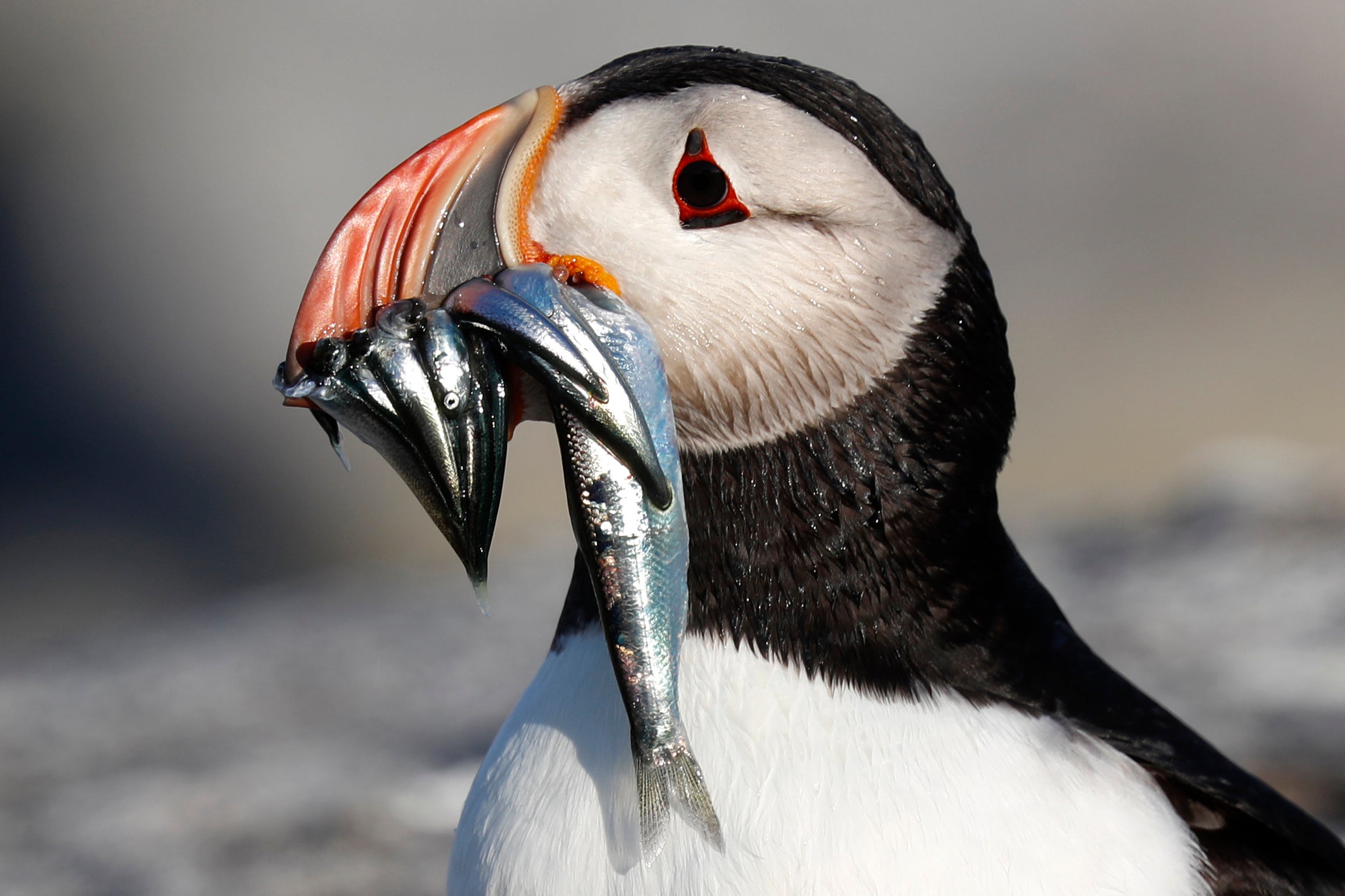Puffin stuff: Herring rules could boost funny-looking bird
The commercial fishery for herring has suffered in recent years due to new restrictions, but those same rules could benefit puffins

Your support helps us to tell the story
From reproductive rights to climate change to Big Tech, The Independent is on the ground when the story is developing. Whether it's investigating the financials of Elon Musk's pro-Trump PAC or producing our latest documentary, 'The A Word', which shines a light on the American women fighting for reproductive rights, we know how important it is to parse out the facts from the messaging.
At such a critical moment in US history, we need reporters on the ground. Your donation allows us to keep sending journalists to speak to both sides of the story.
The Independent is trusted by Americans across the entire political spectrum. And unlike many other quality news outlets, we choose not to lock Americans out of our reporting and analysis with paywalls. We believe quality journalism should be available to everyone, paid for by those who can afford it.
Your support makes all the difference.The commercial fishery for herring has suffered in recent years due to new restrictions, but those same rules could benefit some of Maine's most beloved birds — puffins
Atlantic puffins known for their colorful beaks and waddling walks, were once nearly gone from Maine, the only U.S. state where they nest. Decades of conservation work have brought Maine's population of the birds to about 1,300 pairs that nest on small islands off the coast.
Those same Gulf of Maine waters are an important area for the U.S. herring fishery. The fishery has had to contend with quota cuts in recent years because of federal efforts to protect the fish's population, and more restrictions are on the way.
The U.S. catch of herring, based mostly in Maine and Massachusetts, fell from more than 200 million pounds in 2014 to less than 25 million pounds in 2019.
Puffins are dependent on small fish to survive, and new protections to the herring population could help them do that, said Don Lyons, director of conservation science for the National Audubon Society’s Seabird Institute in Bremen, Maine.
“Herring are certainly a key food source for puffins. The kind of fish they do best on, that they best raise chicks feeding,” Lyons said. “The declines of herring over the last decade or longer have not been good for puffins.”
The herring fishery is facing a new set of restrictions from the National Oceanic and Atmospheric Administration starting Feb. 10. The restrictions include a prohibition on the use of certain fishing gear in inshore waters. They also include new rules that account for herring's role in the ecosystem, federal documents state.
That's good news for puffins, because small fish close to shore are vitally important for puffin parents to be able to feed chicks, Lyons said. But it's going to challenge herring fishermen, said Mary Beth Tooley, director of government affairs for O'Hara Corp., a large Rockland, Maine-based bait dealer and herring harvester.
Herring are economically important because lobster fishermen have used them to bait traps for generations. Shortages of herring have complicated that in recent years, and bait crunches have resulted.
The herring fishery is hopeful for higher catch limits in the future, but 2021 and 2022 could be difficult years, Tooley said.
“A number of businesses are concerned about their ability to be viable,” she said. “In the very near short-term it has been a challenge.”
The puffins nest in the summer on islands such as Eastern Egg Rock off Maine's mid-coast region, where they are a popular tourism draw. Lyons described the birds' Maine population as “steady” over the past five years, if not possibly a bit larger.